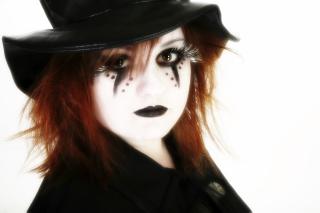Advertisement
In recent years, Halloween has come under attack from a diverse group of people, and for very different reasons. Some evangelical and fundamentalist Christians protest that Halloween celebrates Satan and all things evil. (See “Halloween’s Ritual Roots” for a better take on the holiday’s origins.) Meanwhile, a plethora of groups are expressing concerns that many Halloween costumes perpetuate negative stereotypes. As a result of all these controversies, many public schools and other institutions are refusing to hold Halloween parties, substituting them with what is known as “Fall Harvest” parties or ignoring the holiday all together.
While Halloween can be good, clean fun for children, it is also important for parents to participate in the decision-making that goes into the selection of costumes and to consciously avoid images that perpetuate stereotypes or might be offensive. In fact, the process of choosing a Halloween costume can become an exercise in understanding how the portrayal of some groups may be negative and why these images can be hurtful.
Particularly with pre-teens and teenagers, parent cans pose the question of improper costume selection in terms of personal identity: How would you feel if someone “dressed up” as you, in a fashion that misrepresented who you really are and made a mockery out of you? This perspective can affect youth deeply, as identity issues are an important part of adolescence.
Another concern when it comes to costumes for youth (particularly for females) is the recent trend toward costumes that are revealing and erotic. Nurse outfits that include garter belts and extremely short skirts, sexualized fairy tale character costumes, and even “trampy” angels are all the rage for young women.
It may be difficult to find a costume for a teenage girl that is not inappropriately sexualized, and yet this hyper-sexualization is a negative trend that also perpetuates negative stereotypes not only in the eyes of the men and boys who will see them, but also to the girls and young women who will wear them.
Talking with your daughter about why she might want to wear such an outfit is a way to express your concerns and affirm her autonomy without condoning her choice. Likewise, parents can point out that real nurses, female fire fighters, and maids do not dress as they are depicted in Halloween costumes, and even pose the question as to whether women would be respected in such professional positions if they were to wear such attire. This can open the door to conversations about cultural assumptions of beauty and healthy sexuality.
Finally, if parents want to do away with the tradition of Trick or Treating as hording candy, children can be encouraged to go Trick-or-Treating for UNICEF, collecting coins for children raised in extreme poverty situations. (The Unitarian Universalist Service Committee also promotes the “Reverse Trick-or-Treating” program.) They can also tote a wagon or shopping cart through the neighborhood, going Trick-or-Treating for canned goods or other unperishable items for a local food pantry. In this way, the Halloween fun can become a way of developing a family tradition of social action.
